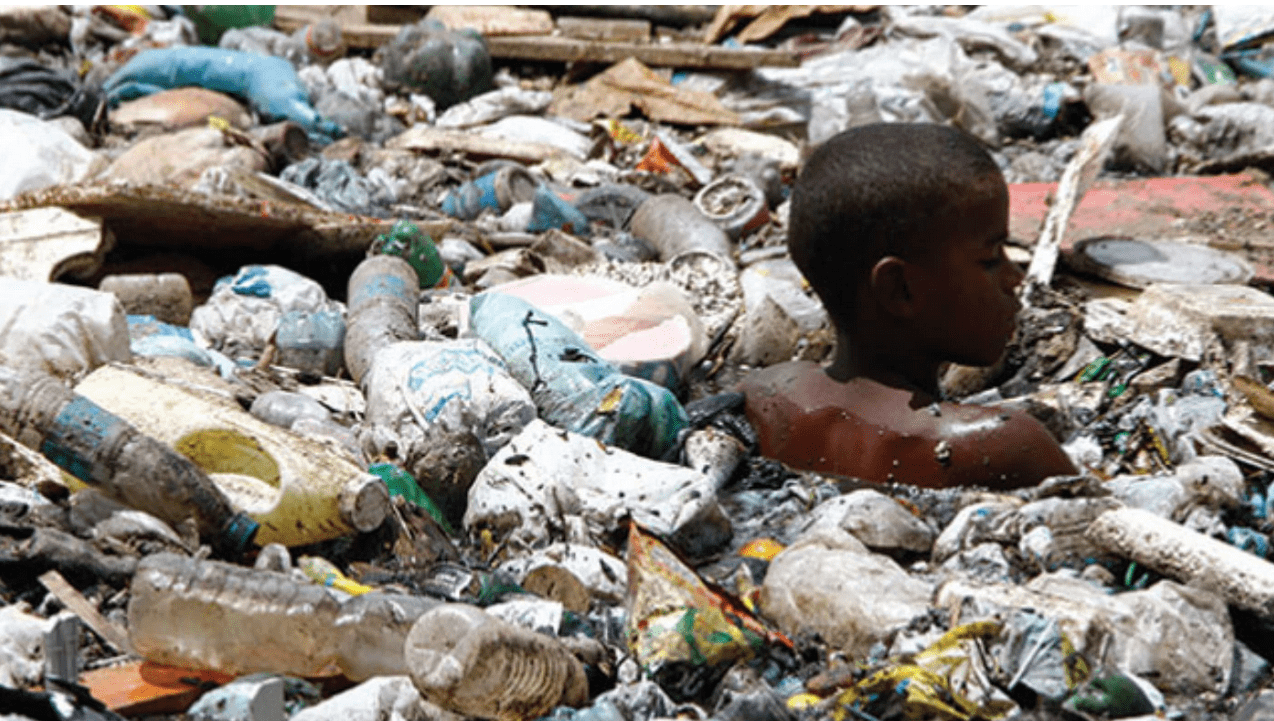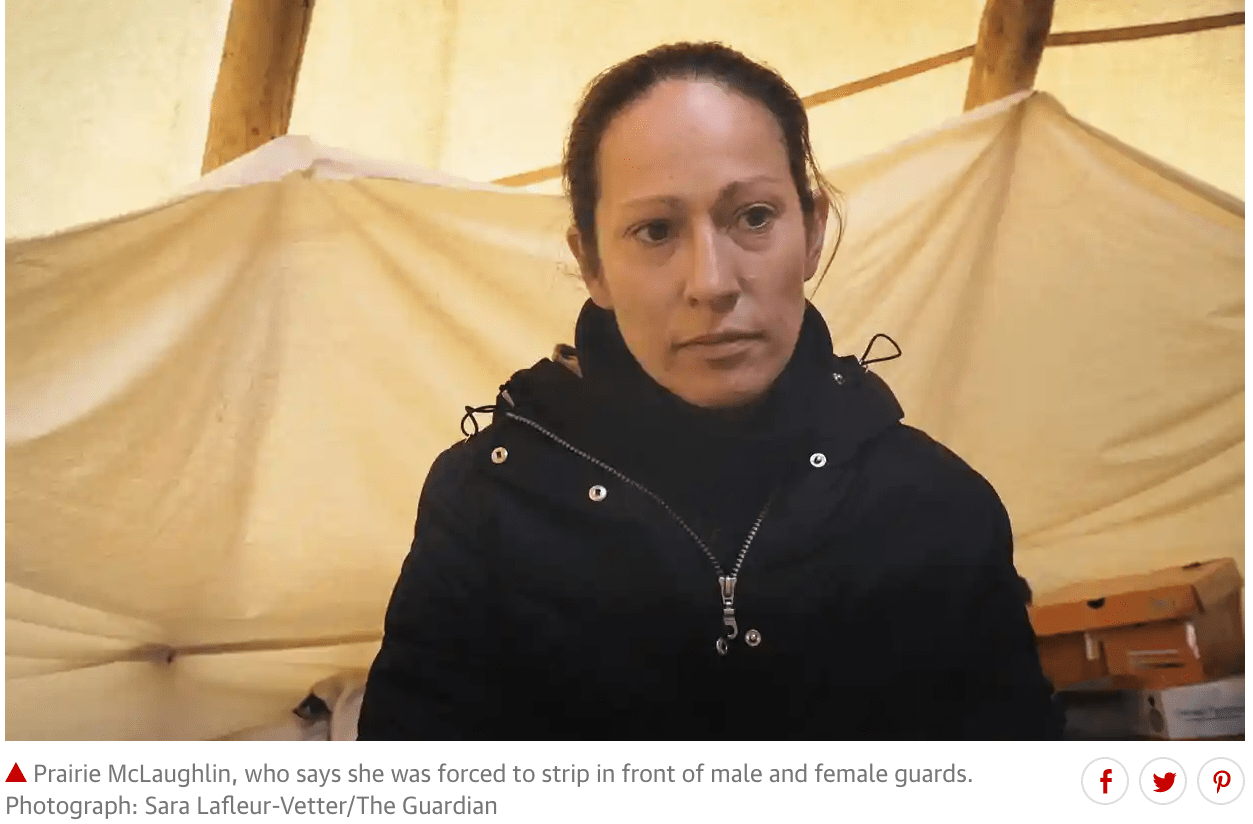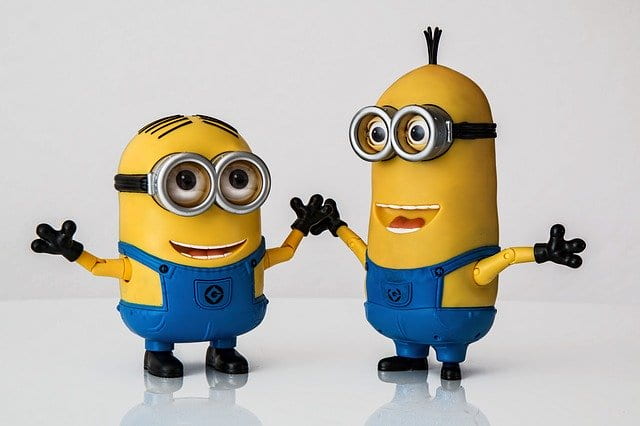Hey Y’all Welcome Back!
I don’t know about you but these weeks seem to be flying by, lets hope this continues.
We have a lot a materials to cover this week, but I don’t want to overwhelm you so we’re going to break it into sections. Our main goal, especially with all the knowledge we now have about ecofeminism, is to be able to go through these materials and make connections of oppression between women and nature. I’m pretty confident in our ability to do so.
The first source we’re going to talk about this week is about “Brazilian Slum Children Who are Literally Swimming in Garbage”. Which is a perfect place to start our discussion. I encourage you to have a look at this article yourself, but for the sake of being on the same page the short article discuss children living in poverty in Recife, Brazil. The government does very little to help these children and their mothers. It wasn’t until this article came out that the government decided to put the pictured boy and his family on welfare. I can say with some amount of certainty that this was only done because the spotlight was put on them, so they felt forced to do something. This was the featured picture…
Yes, the child pictured is a boy, but what is also made clear to us is that this young boy is being raised by his single mother, the father is clearly not in the picture. This is where we are able to see a connection between both oppressed women and nature. This boy is standing in a canal underneath one of the city’s so called ‘majestic’ bridges. If this is how to government treats the environment near a well known landmark I don’t want to know what the city looks like in the ‘forgotten’ corners, and how the people living there suffer because of it. Much like last week, we can see a connection between Brazil’s treatment of women and nature, both are being ‘swept under the rug’. I would also connect this article to a conversation earlier on, environmental degradation. We can see women and children being equally effected by this trash just as, I’m sure the once beautiful canal, is being effected.
This next source, is hard to read. The video attached is even harder to watch. It’s about Native Americans, specifically women fighting against police brutality, harassment and overall inhuman treatment. I do encourage you to watch the video, which is very captivating because of the honest truth of it all. I’m going to summarize a little bit but I think every little detail is really important for the bigger picture, so if you are able to at least look over the above attached link, it would really add to you knowledge about ecofeminism from different aspects.
What is made the most obvious to us within this case, is first the mistreatment of an entire group of people, based on their religious beliefs and they way they choose to live their lives. As the article and short video goes on we see that the Native Americans’ land is being ripped to shreds for a pipeline. This land is a burial ground where their loved ones and ancestors are buried. Although my knowledge of the beliefs Native Americans hold is very limited, I do know that digging up the deceased is extremely disrespectful and leads to the disruption of the deceased’s spirit. All in all, the dead is not to be touched upon burial. The Dakota Access Pipeline came in and completely uprooted this burial ground, disrespecting the people and their beliefs. While holding no concern for the damage of the surrounding nature. Which Native Americans are also very connected to. We can easily see the oppression of nature here, but what about women? Well within this same tribe the women are often targeted by the local police. The women pictured above was arrested along with her friends without any probable cause, taken to the local precinct, asked to take her clothes off for a strip search. She refused. From there I would argue she was sexually assaulted, by both female and male guards as the forced her clothes off and left her in a cell. The Crime and Justice Studies major in me really wants to lay out a very obvious criminal case, but that’s not the knowledge I want you to leave my blog with. Sadly, this is not an isolated case, Native American women across the country are being harassed and mistreated by the authorities while their land is being ripped apart to benefit our ‘modern’ world.
While our world is full of people that fall victim to the system like Prairie McLaughlin and Paulo Henrique, we also have people and movements fighting to prevent this and rallying people to educate the public about it. Wangari Maathai is one of those people. Wangari Maathai founded The Green Belt Movement in 1977 which “is an environmental organization that empowers communities, particularly women, to conserve the environment and improve livelihoods.” Maathai was able to create an entire organization out of an ecofeminists’ two most important interests. Another known movement that was very active during the time The Green Belt was founded is the Chipko movement, which is based in India and fights against deforestation. Chipko is more focused on one aspect of our environment while the Green Belt is more broad, nevertheless they are both creating positive change.
I encourage you to have a look at Wangari Maathai’s website. There’s a lot of really great information on there.
Now that we’ve discussed a few different very modern cases in which both women and nature are being equally suppressed there’s a much bigger question we should be asking ourselves. Do you think that behind the material deprivations and cultural losses of the marginalized and the poor lie the deeper issues of dis empowerment and/or environmental degradation? I know, that’s a loaded question but let’s think about it in pieces, because the answer is right in front of you. With things such as, social class, religion, economic status and race set aside is dis empowerment and/or environmental degradation the root of the problem? I know it can be hard to set those things aside as we have been conditioned to see them as the most important within our society, but it’s important to be able to answer this question. I want you to be able to develop your own answer and opinions for this question but I believe both dis empowerment and environmental degradation have a prominent place within ecofeminism and the foundation of it. However, I think it’s nearly impossible to set such things aside or think in terms of ‘behind it all’ because they are such important parts of this conversation. Class creates certain issues and so does race and religion. People hate change, which is the core of most issues within our society. All factors need to be considered to create a solution.
I want to leave you with a quote from Wangari Maathai’s Speak Truth to Power speech that really stuck with me. “The clarity of what you ought to do gives you courage, removes the fear, gives you the courage to ask. There is so much you do not know. And you need to know. And it helps you get your mind focused. Now, you are out of the bus and moving to the right direction. They will see you move with passion, conviction, and persistence. You are very focused.”
Stay Focused Y’all!
Until Next Time….






Reading your blog seems to challenge me. It may be how I interpret your writing, but it feels so aggressive. “Yes, the child pictured is a boy, but what is also made clear to us is that this young boy is being raised by his single mother, the father is clearly not in the picture.” This sentence really irks me because you start by saying the picture depicts a boy as if because the person is male it makes a difference. Would you say yes, the child is a girl, if there was a picture depicting the girl covered in ringworm? It is also easy to assume that the dad is not in the picture because of reasons such as he justy up and left, but what if he was not in the picture because he died from disease? the article does make clear it is a mom raising 6 children, the boy and his siblings, but we do not know why the dad is in the picture. I will say it is likely he just abandoned them, but that is assumption as far as we know. Maybe he got killed in a protest? This image does not depict the oppression of women and nature either. It depicts the poverty stricken children in poor slums. I would say men are also fairly affected by the trash as well, and I am not making excuse for the men that are not taking responsibility for their kids, but we can not just throw one group of people in a group. Such as when you talk about the Native Americans being oppressed by authorities. you take the gender differences aside only briefly mentioning that “From there I would argue she was sexually assaulted, by both female and male guards as the forced her clothes off and left her in a cell.” What happened to those women is unjust as well as what previous government has done to the Natives in general. Besides that though, it just makes me wonder why you did not emphasize more on how police women and men assaulted the women. This shows me that women are not only being oppressed, but also oppressing. Though women may be in the majority for being oppressed and minority in oppressing, it clearly shows it can go both ways. Finally, you end your blog with asking a question, which I am not entirely sure what you are asking. you say “Do you think that behind the material deprivations and cultural losses of the marginalized and the poor lie the deeper issues of dis empowerment and/or environmental degradation? I know, that’s a loaded question but let’s think about it in pieces, because the answer is right in front of you. With things such as, social class, religion, economic status and race set aside is dis empowerment and/or environmental degradation the root of the problem?”, which I think you are asking if you ignore a persons race, religion, and class is the issue just solely disempowerment and environmental degradation? Which to me does not make the most sense because it is class (economic status and social class) that causes this separation. people in higher social/economic classes are the ones usually opening up business that cause environmental degradation. It is also the consumers buying the product that help support this system. I would also argue it is the governments fault in failing to give education and the tools needed of the people to be more able to raise their economic status and demand a better cleaner quality of life. Overall, I think you make good points in the oppression of women and I will say it seems women are usually the ones who are better at standing up and recognizing the need to stand up to the vulnerable. Like they say in the video that they not only speak for themselves but for the animals and trees and other forms of life. Also I hope you know that although I say your blog challenges me, that I do enjoy reading it. I am always trying to understand others points of view and yours seems to differ greatly from mine and you seem fairly passionate about your believes. Until next time, stay focused Y’all.
I love your writing. The way you present your thoughts and opinion in words are remarkable. But the only thing that I didn’t like was the picture of the boy swimming in garbage. Not that you shouldn’t use it, but I am squeamish. When I was searching for the resources I came across this article, although I am a very strong person, but I couldn’t bare the gaze of it. Sometimes it feels like that we people are so busy in our own life that we don’t care to see our surroundings. To have a look at those who weren’t blessed with luxuries and opportunities that we are. The struggle they have to go through. Just imagine yourself in this boys’ place, can you swim in this garbage just for food? I am nauseated with this thought. And unfortunately, government also don’t care about it.
The burial ground that was destroyed was done by male organization, and while reading through this, it came to my mind about all the wars that have been done so far. Why there was a need of war at first place? These were no other than men who were always involved in wars. Because of their benefits, they made millions of people suffered. We know about Hiroshima and Nagasaki. It’s been 75 years since that war and still children are born with deformities. And it’s predicted that if Third World War happened, that would be the death of our Earth. And according to me, men should be held responsible for this death, and women and nature will again suffer.
In AD period when men go to war, destroying nature just to conquer, women were given the responsibility to look after injured. This even tells us that women were and are nurtures from the beginning, they take care of everything rather it be family or nature. I wanted to add to this which is a bit funny and for those who don’t believe in it, vacuous. The burial ground that was touched and you wrote, “All in all, the dead is not to be touched upon burial”, made me wanted that those spirits buried to the ground should raise and haunt those Dakota Access Pipelines people for the rest of their lives.
Talking about sexual assault, so it’s not only Native America, but throughout the world, there are cases of sexual assault registered and majority I think especially in cultures where they say that they need to hide such stuff because it will hurt their family’s reputation, aren’t registered. So, we don’t exactly know how many women are out there who suffered this trauma. In countries like India, women still are burned alive if found guilty of having relation with a guy or did something out of cultural norms. The practice of sati — I also mentioned in my second weeks’ blog which was in Hindu culture — women life ends with their husband’s life. If their husband dies they have to die along ALIVE. It boils my blood that how in such cultures women were oppressed by these fake norms and the religion they made up which never asked this. There’s a movie recently made in 2018, ‘Padmaavat’ it’s a Bollywood movie and it shows the concept of how women are taught of their life when it comes to their husband’s life. The guy who’s the king of that kingdom went for war and before he left his wife asked permission for doing Jauhar (mass suicide). This is also a part of Hindu culture which is performed by women when their husband’s die and to avoid enslavement, being seen and raped, they burn themselves alive. This all is just because in those day women were not allowed to show themselves.
Madison,
Thank you for your blog post, it was quite informative. The part I wanted to highlight is the government’s role in preserving nature as well as the well-being of those being governed over. I’m so glad you brought it up. In reference to the article on Recife, Brazil, you mentioned how the government couldn’t even keep a national landmark in good condition, imagine the “forgotten” corners. I think this is important to place an emphasis on because this happens way too often. In places like the Seaport District of Boston, Times Square of NYC, Hollywood Boulevard of LA, (I could go on), money from the local government is dumped into these areas because they are what the mass majority of people around the world want to see. These tourist attractions are sometimes the only places in the area being held to code. But if one were to step outside the realm of tourism, they would be greeted with a rude awakening. It’s sickening how things only get done after the media gets involved. And even then, like in the case of Recife, the government only exercises their power to the bare minimum.
“Unfortunately, this publicity hasn’t yet resulted in the other children of the slums getting more money or services.” (Corrêa, VICE) The government has a responsibility to its constituents, and the media continues to serve as a checks and balances system with little impact. I’m curious, what do you think the media (or any institution/organization) could do more to get the government to fulfill its purpose?